Annual Review
April 2023 - March 2024




April 2023 - March 2024




Peter Mather Chair
As we reflect on the past year, I am pleased to present our annual report for 2023. It has been a year where energy security, the cost of energy, and the drive to accelerate net zero continued to be common themes the world over. Our commitment to providing access to affordable clean energy through technology innovation has never been more crucial.
The dedication of the Net Zero Technology Centre (NZTC) in driving transformative projects in the energy sector remains unwavering. It has been fantastic to see projects such as the Hydrogen Backbone Link and the Liquid Organic Hydrogen Carriers (LHyTS) project demonstrate the feasibility of Scotland realising its potential to become a net exporter of low carbon hydrogen by 2050. From renewable energy initiatives to advancements in decarbonisation, we have witnessed remarkable progress in the development of innovative technologies which pave the way for a more resilient and adaptable energy future.
I’m always in awe of the drive, tenacity, and ingenuity of the TechX startups. Their impact is undeniable, and they play a pivotal role in shaping the future of clean and affordable energy, from space-based metocean survey intelligence technology for offshore renewable energy to cryogenic, superconducting hydrogen motors that decarbonise aviation.
Along with my fellow board members, we have worked closely with NZTC’s leadership team to unlock strategic initiatives, navigate challenges, and propel the organisation forward.
We have enhanced our Technology Services capabilities and broadened our international footprint. This evolution reflects our commitment to staying at the forefront of innovation and helping our current and future clients and partners in shaping their decarbonisation and energy diversification strategies.
Looking forward, we maintain our optimism regarding the opportunities that lie ahead. We are well-positioned to navigate the complexities of the energy landscape and drive positive change on a global scale. I would like to extend my heartfelt thanks to our stakeholders, employees, and partners for their continued support and dedication.



Myrtle Dawes CEO
As we navigate through the dynamic landscape of the energy transition, it’s imperative to recognise that this journey is not merely a shift, but a profound transformation reshaping industries worldwide. Decarbonising high-emitting sectors, coupled with rapidly progressing clean energy technologies must be at the forefront of our collective efforts. Innovation, collaboration, and emerging technologies are the game changers in this endeavour.
I’m immensely proud of what NZTC has delivered this past year as our business continues to push boundaries, evolve, and grow, thanks to our talented and committed people. In June 2023, I assumed the role of CEO, succeeding Colette Cohen. These were big shoes to fill following the success and achievements of the organisation led by Colette since its inception in 2017. We welcomed new members to the leadership team, bringing a fresh focus on service development and market penetration. This shift has enabled us to concentrate on our core capability of working with industry, partners, startups, and academia to develop and deploy technology, while also expanding our Technology Services portfolio and client base on a global scale.
We held three funding competitions this year. The first, our 2023 Open Innovation Programme call for technologies focused on data and digital technologies, including robotics,
resulted in over 140 applications and the selection of eight game-changing technologies. The second was our call for field trial-ready technology in the area of Corrosion Under Insulation (CUI) detection as part of the Non-Intrusive Inspection Field Trial Accelerator (NIIFTA) collaboration. Our third competition focused on early-stage electrolyser technologies, with the selected winners to be announced in June 2024.
Our TechX programme welcomed its sixth cohort. It’s fantastic to see the startups we support continue to thrive, with the 53 pioneering alumni having raised over £106M in equity since graduating the programme. Committed to supporting scale-up, we announced our partnership in the Energy Incubation and Scale-up Hub (EISH), which will form a key part of Aberdeen’s Energy Transition Zone, and is due to open in 2025.
This year saw us take to the global stage again, notably launching our Technology Without Borders initiative at COP28 and the delivery of exciting advisory scopes through our Technology Services offering.
Four of our projects were also shortlisted for awards at the Collaborate To Innovate (CTI) Awards and Offshore Achievement Awards 2024. This recognition underscores the dedication, expertise, and collaboration of our people and partners.

Our vision:
A net zero world, powered by technology innovation
We do this through:
Developing and trialling net zero technology
Accelerating clean energy startups
Delivering net zero advisory services
Our mission:
To work with industry, government and academia driving technology innovation to accelerate the energy transition to net zero
Our technology focus areas:

Industrial emissions reduction
Renewable power and energy storage
Low carbon hydrogen and alternative fuels
Carbon capture utilisation & storage
Digital and data integration
Robotics and autonomous systems


The International Energy Agency (IEA) estimates that by 2050, 35% of the projected global greenhouse gas abatement requirements (193 gigatonnes of CO2e) will need to come from new technologies that are currently not commercially available. We are closing this gap, driving technology development, deployment, and nurturing innovation at every turn.
We have established ourselves as one of the leading global centres for net zero technologies through our activities in the energy sectors in the UK, Europe, Middle East and USA.
This year we welcomed our new CEO, Myrtle Dawes, and new Board Chair Peter Mather, to lead the organisation as we continue to diversify and grow our impact.
We addressed global challenges, shining a light on local solutions at key events including COP28 in Dubai, All Energy in Glasgow, and Offshore Europe in Aberdeen. We inspired progress through our research and thought leadership with the launch of several reports. Amongst these were Hydrogen Backbone Link, Technology Without Borders, and Advancing Remote Operations, all of which highlight technology and market maturity, gaps, and opportunities.
From inception, we have leveraged £0.21 billion of government funding and unlocked a further £0.22 billion of private sector money to deliver hundreds of technology development projects and trials. We have anchored new technology development in the UK, attracted international investment in energy innovation to the UK, and enabled the export of technologies and skills. The past has been impressive, but our future has even more possibilities.
April 2023 – March 2024
£47M Co-invested with industry
£6.7M+ Awarded with industry through our 2023 open innovation programme
235
12 Technologies screened
8
Field trials completed, planned or underway Startups from cohort 6 began their journey
59 Technologies commercialised
£430M Co-invested with industry
350+
154
69
42+
3,370 Technologies screened thought leadership contributions Startups accelerated Research and development centres established Field trials completed, planned or underway
42+ million tonnes of CO2e abated by 2030
2

We support the development and deployment of technology to reduce the carbon footprint of oil and gas and other high emitting sectors, whilst also leveraging the transferrable skills, knowledge and technology to transition to a new integrated net zero energy system.
We are reducing the cost and increasing the capacity, reliability, affordability and sustainability of “new energy” technologies. This will make low carbon hydrogen, carbon capture, utilisation and storage (CCUS), and renewables cheaper, faster, integrated and easier to deploy, more transportable and more useable and storable.
This in turn will contribute to an accelerated energy transition.
Whilst there is a transition from fossil fuels to renewable sources of power, energy demand is still heavily dependent on oil and gas production and will be for many years to come. We must strive to continue to support the energy sector with the latest technology developments to assist in the production of oil and gas using the cleanest methods with the lowest emissions intensity as possible.
Reducing emissions from high carbon emitting industries is fundamental to meeting net zero targets. The UK oil and gas sector must reduce its emissions by at least 3.4 gigatonnes of carbon-dioxide equivalent (GtCO2e) a year by 2050. This is a 90 percent reduction in current emissions that future and emerging technologies will help achieve. Domestic energy sources lessen imports, decrease emissions and improve energy independence and security.
Our goal is to develop field proven emissions reduction technologies across:

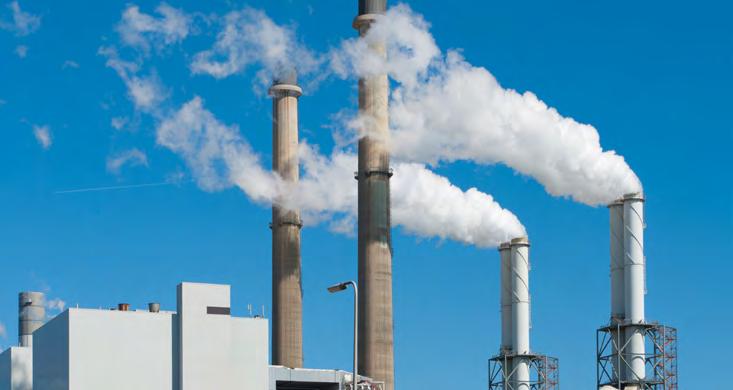
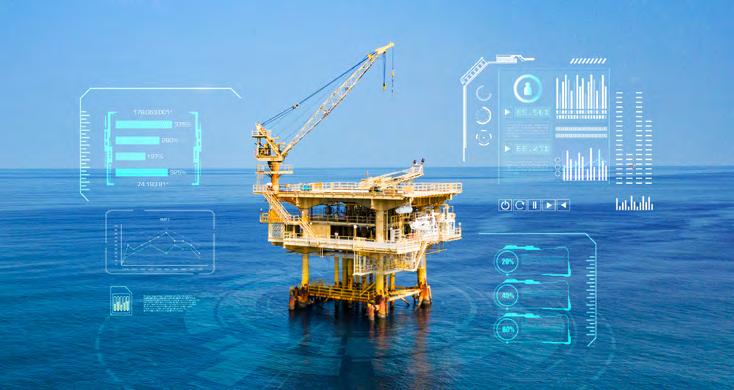
Prioritising the utilisation of alternative fuels or small-scale renewables where electrification isn’t feasible.

Enhancing production efficiency through the utilisation of software and hardware.
Our goal is to develop solutions that eliminate venting and enable zero routine flaring by 2030.
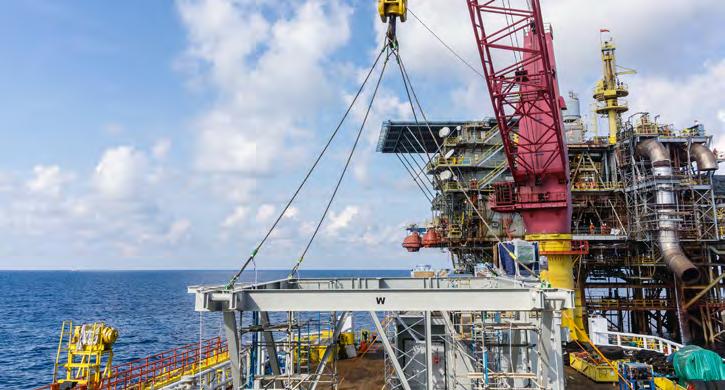
Key challenges involve alternatives to cement plug & abandonment and sustainable removal. We’re actively field-trialling technology to optimise and streamline global decommissioning activities.
Addressing challenges such as Corrosion Under Insulation (CUI), we leverage software and hardware technology to ensure asset integrity.
This year, to find the next big breakthroughs, we launched our 2023 Open Innovation Programme and held a call for field trial ready technology in the area of CUI.

Combating Corrosion: Innovative CUI Solutions
Our call for field trial-ready technology in the areas of Corrosion Under Insulation (CUI) detection and monitoring offered developers the chance to test their technology in a real-world environment under the Non-Intrusive Inspection Field Trial Accelerator (NIIFTA) collaboration.
The selected technologies will be given the opportunity to field trial their equipment on an onshore terminal operated by one of the NIIFTA members, enabling demonstration of capability and further testing and validation.
NIIFTA is a collaboration between the North Sea Transition Authority (NSTA) and NZTC, with support from Kellas Midstream, aimed at expediting field trials of non-intrusive inspection technologies using onshore terminals.
Discover more about the project Click here
The selected technologies were:

Subtera’s novel CUI and moisture detection method utilises its patented passive sub-terahertz sensing technology platform. The technology’s direct measurement approach is unique, measuring photons being naturally radiated from corroded metal and moisture.
Fluves CORROSION is a unique method to monitor CUI with a non-intrusive installation process that does not require the cladding to be removed. The L system monitors 24/7 for early signs of moisture ingress in the insulation with an accuracy of half a metre.
Reducing CUI is essential for the offshore industry to achieve net zero emissions and maintain high levels of safety, and such trials can help identify and facilitate the technologies that will help us achieve this.
David Cameron, Programme Manager, Industry Collab & New Projects, NZTC
We bring together industry partners through Joint Innovation Programmes (JIP) to develop solutions, technologies and initiatives that address net zero challenges and drive standardisation. This year we have seen significant traction with our Well Decommissioning Collaboration Initiative.

The United Kingdom Continental Shelf (UKCS) is forecast to have a total of 2,102 wells decommissioned between 2022 and 2031, at a cost of more than £20 billion over the next decade.
Technology best practice and innovation have a key role in helping operators reduce the cost of well plug and abandonment (P&A) and associated emissions.
Our Well Decommissioning Collaboration Initiative facilitates risk and cost-sharing among organisations confronting similar challenges, minimising the gap between technology developers and end users.
We are accelerating the testing, validation, and qualification in multi-operator collaboration field trials of solutions that provide alternative barrier materials to cement. We also focus on enabling and verification technologies that allow for rigless P&A to be possible.
We aim to fund up to five technologies per year, supporting a minimum of three field trials for each, with the goal to have a minimum of six technologies successfully qualified and adopted by 2025.
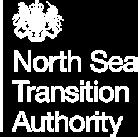







We were shortlisted for the ‘Best Example of Collaboration’ award for the Wells Decommissioning Collaboration at the OWI Global Awards 2023.

The Scottish Net Zero Roadmap (SNZR) launched in March 2023. It is the completion of a two-year collaborative project which developed a roadmap that sets out how Scottish industry can achieve net zero by 2045. It focuses on a cluster of industrial activity on the east coast of Scotland which covers many of the largest industrial sites across a range of sectors and around 80% of Scotland’s industrial CO2 emissions.
The project was jointly funded by Innovate UK under its “Industrial Decarbonisation Challenge”, part of the Industrial Strategy Challenge Fund, and by several key organisations coordinated by NECCUS including Aker Solutions, Costain, Altrad Babcock, Energy Systems Catapult, Halliburton, Optimat, Storegga, University of Edinburgh, University of Strathclyde, Wood and NZTC. NZTC’s work focused on the scanning of technology options, their prioritisation, their scalability and cost reduction potential.
Along with TNO, we launched ‘One North Sea’ (ONS), a publicly available platform which maps out nearly 100 integration projects already underway in the North Sea region that demonstrate a component of re-use of existing infrastructure.
During 2023, the ONS platform was reviewed, updated, and promoted to operators and developers to expand the database and strengthen its position as a trusted industry resource. A report was published providing an overview of progress in terms of emerging technology development in the North Sea region, as well as key trends observed in energy systems integration since the project was kicked off in 2021.
Together with more than 30 international parties, the North Sea Energy programme researches how the North Sea’s potential can be utilised for a climate-neutral energy system using an integrated approach, developing strategies and perspectives to harness synergies between offshore wind, marine energy, carbon capture & storage, natural gas and hydrogen developments.
In the next phase of the project, NZTC will work alongside other international partners from Norway and Germany to deliver the international outlook for the North Sea and develop offshore transition scenarios focused on the rollout of offshore infrastructure over time, supporting the integration of national transition plans for mutual benefit.

Floating offshore wind (FOW) is an important vector in the transition to electrification for oil and gas assets. It is also seen as a key enabler of green hydrogen. Most oil and gas platforms are situated in waters deeper than 60 metres, making FOW installations a suitable option to decarbonise oil and gas production in the North Sea.
Our research highlights that the FOW sector can generate up to £1 trillion in economic impact across the UK over the next 30 years. Accelerated deployment from 2026 to reach an ambitious target of 49 gigawatts (GW) by 2030, above and beyond what is currently mapped and including significant expansion of floating wind, could potentially offset anticipated job losses in the oil and gas sector.
We are supporting early deployment of FOW, specifically around the Innovation and Targeted Oil and Gas (INTOG) projects which secured seabed exclusivity agreements in 2023, and renewable power solutions for remote offshore locations, driving cost reductions of over 50% to make these technologies cost competitive. We are working to increase efficiencies for deployment of between 60GW and 150GW by 2050, both to supply electricity for domestic consumption and export, and for low carbon hydrogen production.
Our focus is also on economical large and inter-seasonal energy storage options and ensuring the foundations of an integrated UKCS power grid are in place.
We are working with the Offshore Renewable Energy (ORE) Catapult to support the next wave of FOW innovation projects in UK waters. The INTOG Innovation Network is working across the five 100 megawatts (MW) innovation projects from the INTOG leasing round. The aim is to maximise the collective innovation impact and value to industry of these projects which are seen as key to ramp up FOW activity.
We are also working with ORE Catapult to examine potential pathways for the delivery of innovative FOW technology integrated with existing energy infrastructure. The WINTOG programme is engaged with the ‘targeted oil and gas’ projects from the INTOG leasing round to maximise the potential of these projects to decarbonise oil and gas activity and to maximise their energy transition impact and ramp up of larger FOW developments in UK waters.
Based in Glasgow, Innovatium Group was awarded funding through our 2022 Open Innovation Programme and the project kicked off in 2023. Innovatium’s PRISMA Liquid Air Battery is dramatically improving energy storage combining compressed air production and energy storage in the form of highly energy dense liquified air.
PRISMA is a state-of-the-art technology which can address the intermittency challenge of renewable power generation. The project is supporting the development of PRISMA to maximise its round-trip efficiency.
Enertechnos’ subsea Capacitive Transfer System
Enertechnos Ltd, located in London, was also awarded funding through our 2022 Open Innovation Programme. The project, focused on offshore transmission, commenced in 2023. Enertechnos’ subsea Capacitive Transfer System is a novel cable design, for use onshore and offshore, leading to lower transmission losses and facilitating more power delivery than equivalent legacy cable systems.
The project is focused on proving the technology at scale and converting the current onshore application to an offshore version of the cable. Testing and modelling of the cable design have shown it to reduce transmission losses by 10%.

Carbon Hydrogen
Low carbon hydrogen offers a substantial economic opportunity for the UK based on abundant renewable energy, supply chain expertise and huge export market potential.
We are leading the way in helping establish and grow the UK’s low carbon hydrogen economy, exploring low carbon hydrogen production methods, pathways and projects that put Scotland and the UK on the map as a frontrunner in hydrogen technology.
Our goal is to link supply with demand, reduce low carbon hydrogen production costs by 50% and realise long-term storage opportunities and supply routes to UK/Europe.
The HBL project aims to connect Scotland to the European Hydrogen Backbone to create export opportunities for low carbon hydrogen and hydrogen technologies.
Phase one of the project demonstrated the technical feasibility and commercial viability of what could be one of the most critical pieces of infrastructure required to enable Europe to reach net zero. It proposed a new pipeline directly from either Shetland’s Sullom Voe Terminal or Orkney’s Flotta Terminal to Europe, using Emden in Germany as a case study.
700 new jobs initially, enabling 300,000 green economy jobs by 2045
Scotland could meet up to 10% of Europe’s projected low carbon hydrogen import demand by the mid-2030s
The HBL Project continues to Phase two with the goal of connecting Scotland to Europe by the 2030s.
Phase 2 funding partners:






Download the report Click here

The Scottish Government supports the Hydrogen Backbone Link project because it gives valuable insight into the viability of repurposing or developing new pipelines. This can help us understand any barriers where government support is required to unlock investment and realise Scotland’s export potential.
Neil Gray, Energy Secretary, Scottish Government

Our LHyTS project investigated the feasibility of a pilot trial for transporting low carbon hydrogen from Scotland to Rotterdam. The project analysed critical infrastructure and technology requirements; the logistics of loading, transporting, and storing Toluene (TOL) and Methylcyclohexane (MCH); and preparing the hydrogen for end users. Two potential export terminals in Scotland were considered (St Fergus and Sullom Voe Terminal) with the import location being Koole Terminals in the Port of Rotterdam.
The project outlined two pilot trial scales: a small-scale scenario resulting in the export of 40,100 tonnes of low carbon hydrogen per year by 2027, and a large-scale scenario corresponding to 250,500 tonnes of low carbon hydrogen per year by 2031. Scotland has the potential to become a net exporter of low carbon hydrogen by 2045 and this project paves the way in making transporting low carbon hydrogen at scale a reality.
Phase three has been recommended, which would include further stakeholder engagement and project funding applications.
Download the report
Click here
Electrolysers play a key role in the sustainable production of low carbon hydrogen, separating the hydrogen and oxygen molecules found in water using electricity, without emitting carbon dioxide into the atmosphere.
Our Energy Hubs project, one of seven projects within the Net Zero Technology Transition Programme (NZTTP), has highlighted that low carbon hydrogen technology and infrastructure requires rapid development to achieve the UK’s decarbonisation goals. Improvements in electrolyser efficiency would have a significant impact on reducing system cost.
In March 2024, we launched a funding competition seeking early-stage electrolyser technologies which have the potential to significantly improve the efficiency of low carbon hydrogen production.
Successful applicants will be announced in June 2024 and will receive a share of up to £500,000 funding to accelerate the development of their technology towards pilot or prototype level within the technology development period.
Link to the Energy Hubs page Click here

HII is a partnership including seven UK catapults, Advanced Propulsion Centre, Aerospace Technology Institute, NZTC, and National Physical Laboratory. It was set up to drive innovation and supply chain development across hydrogen production, distribution, and consumption.
The mission is to accelerate the development of critical technologies and supply chains for the fast-growing low carbon hydrogen economy, and by doing that, the project aims to support UK industry to anchor high-value jobs, boost resilience, and drive decarbonisation. HII is working to accelerate the development of nine key technology areas for low carbon hydrogen production, distribution, and consumption. We have supported with the “UK Hydrogen Opportunity” and “Case for Investment” publication due to be launched in 2024.
The NESH2A Steering Committee was established to coordinate various initiatives to deliver over 1GW (20%) of the UK’s low-carbon hydrogen production target by 2032. Additionally, the committee seeks to position the region advantageously to capitalise on future hydrogen export markets.
The committee comprises representatives from several organisations including NZTC, Hydrasun, Storegga, ETZ Ltd, Aberdeen Renewable Energy Group (AREG), NESCol, SGN Energy Futures, Scottish Enterprise, and Aberdeen City Council. NZTC, other NESH2A partners and BP have recently submitted a bid for EU Hydrogen Valley project funding.
The MOHN project is a 1M Euro collaborative project funded by the German Federal Government and delivered by Cruh21 alongside several key international partners. NZTC was selected to represent the UK, providing key insights and aligning stakeholders to contribute to this collaborative endeavour to deliver an aligned master plan for offshore hydrogen infrastructure in the North Sea.
Together with German based Cruh21 we are developing a study assessing the potential for export of Scottish low carbon hydrogen to Germany, providing a holistic overview of crucial development stages for both export and consumption of new energy commodities.
The report will analyse Scottish low carbon hydrogen production and German demand and aims to create matching scenarios for hydrogen export and consumption, exploring the technologies, regulations and the role of hydrogen derivatives that will be required to enable an effective transport and use of hydrogen across borders.

One of the key challenges to delivering net zero is reducing the emissions associated with the offshore energy industry. Power generation from fossil fuels accounts for 79% of offshore emissions, as installations rely on their own produced gas, or imported diesel, as the fuel that is then combusted in a gas turbine or engine to produce electricity.
The industry can make significant progress in reaching emissions reduction targets through the adoption of alternative fuels such as green methanol and bio-diesel for power generation, whilst fuel production facilities mature from the use of
recycled industry sources of carbon (non-renewable) to renewable sources such as direct air capture or biogenic. The market for alternative fuels also extends far into other sectors, such as road transport, maritime and aviation.
We are focused on delivering research projects that support the entire alternative fuel sector. From the provision of reliable and renewable feedstocks at scale for the manufacture of green fuels such as e-methanol and advanced biofuels, to accelerating the development of technologies to efficiently manufacture, transport, store and utilise these fuels effectively.
We are working with OEMs, such as Siemens Energy, to create retrofittable packages for existing equipment as well as brand new power gen technologies.
We are leading the way in the use of alternative diesels and green methanol through our NZTTP Alternative Fuels and Energy Hubs projects. The projects provide a comprehensive understanding of the alternative fuel landscape, the applicability of each fuel type, and how e-methanol may be utilised in an offshore environment.
Discover more about the project Click here
Carbon Capture, Utilisation and Storage (CCUS) has a vital role in decarbonising energy intensive industries where emissions cannot be abated by switching fuel or electrification, and from removing legacy emissions from the atmosphere. Reducing the cost and improving the efficiency of carbon capture technologies, from the solvents and sorbents to membranes and conversion solutions, will improve feasibility and could also lead to more scalable, accessible direct capture technology.
We are championing technology that brings down the costs of capture, turns CO2 from a liability to an asset through the creation of new carbon utilisation products, and enables the safe transportation and storage of CO2 to ensure it is removed permanently and doesn’t escape back into the atmosphere.
We are working with DAC technology developer CO2CirculAir to develop their novel direct air capture technology, SMART-DAC.
The novel solution captures CO2 directly from air by utilising natural airflow, avoiding using energy-intensive air blowers, while harnessing renewable energy to power the absorbent regeneration process - making it a zero emissions solution for CO2 capture.
A significant milestone was reached in 2023 in the acceleration of the technology with the construction of the pilot plant in Larne, Northern Ireland. In September 2023, SMARTDAC successfully demonstrated the capture of CO2, one of the first projects to demonstrate CO2 capture from the atmosphere in the UK and is expected to capture at least 100 tonnes of CO2 from the air every year. Built on a modular design, the scaleup of a commercial plant to capture at least 50 kilotonnes (kT) of CO2 a year is expected by 2030. This would be big enough to combine with low carbon hydrogen to manufacture green methanol, which can be used as a shipping fuel, or possibly other synthetic fuels.
All Carbon Capture and Storage (CCS) global projects require a qualified well barrier. Existing Subsurface Safety Valves (SSSVs) are unsuitable for low-temperature CCS service. Nine operators including BP, Chevron, EBN, Eni, Equinor, Harbour Energy, Shell, Storegga, and TotalEnergies have initiated a collaborative test programme to develop and test three valve sizes. Over the last 12 months 3½, 4½, and 5½ inch valves have been designed, built and tested by slb, Halliburton and Baker Hughes. The values will now be submitted for accreditation and an amendment to the API 14A standard. NZTC is facilitating global collaboration to ensure that the CCS industry operates safely and efficiently by equipping it with the necessary tools.


Digital and data integration is a key component enabling the acceleration of many of our technology priority areas.
We are expanding our areas of interest to consider multiple levels of interest from digital technology applications at a component level (e.g. valves and pipes) to those necessary to enable the integration of mixed energy assets as part of the wider energy infrastructure.
We are doing this by:
• Developing and implementing data and digital architectures to enable secure sharing of data
• The application and deployment of advanced sensors and edge computing to enable sophisticated analytics, remote operations and intelligent assets
• The increased resilience and deployment of robotics to enable autonomous operation
• The development and integration of modelling and spatial planning tools to enable improved decision support for regional energy systems concept selection.
Our Data for Net Zero (D4NZ) project aims to be a first for the offshore energy sector and will demonstrate elements that support the concept of a Smart Energy Basin, based on the smart cities approach. Utilising an integrated suite of data science, visualisation and modelling tools, the Smart Energy Basin will ultimately be a digital copy of the entire energy basin that will be utilised to accelerate a range of cross-sectoral decision-making approaches for energy integration and the transition to a net zero energy system by 2045.
Working with a variety of partners across academia and industry, the project is exploring the use of different tools to explore the repurposing of oil and gas platforms for low carbon hydrogen production, producing scenario planning tools to simulate and optimise energy grids, perform multicriteria decision making for decommissioning activities and provide analysis and insights for environmental impact analysis for marine systems.
The project, using a combination of mathematical models as well as 2D and 3D visually representative systems, will provide examples of how digital tools can leverage data to inform local and regional decision making for the UKCS.
Discover more about the project
Click here
Both the D4NZ and OEDA projects are being delivered through our Net Zero Technology Transition Programme (NZTTP), which was awarded £15.8 million from the Scottish Government’s Energy Transition Fund.
At present, data sharing between organisations is a challenge within the UK offshore energy sector as there is no clear mechanism in place to enable organisations to securely share or pool data, to enable sector-wide insights to be uncovered. As a result many organisations are duplicating effort, inspecting and analysing data in parallel and ultimately introducing inefficiencies within their operations..
Our Offshore Energy Digital Architecture (OEDA) project highlights the technical and non-technical requirements to deliver an integrated data sharing ecosystem for the industry. OEDA has established that the barriers to adoption of data collaboration within the offshore energy sector are not fundamentally a technology barrier but rather people and process related.
Focus should move away from providing a single ‘architecture’ that would host large amounts of data, towards an integrated solution that brings together multiple sources of data from different locations and data portals together with methods such as federation being applied to avoid concerns around data security. Other sectors such as aerospace have already shown the significant industry benefits that can be achieved by having wider access to data. OEDA aims to transfer that learning to the energy sector and, to date, significant interest has been generated in support of that goal.
Discover more about the project
Click here

Robots and autonomous systems enable the potential for dangerous, dirty, dull and difficult (4D) activities and tasks on assets to be performed safely, efficiently and routinely while releasing the human operators to undertake higher value operations elsewhere.
With the energy demand creating the need for an increasing number of deployed assets both offshore and onshore, there is an expected shortfall in available workforce to provide the maintenance and operational support for the future energy sector. NZTC is working to advance the development, resilience and adoption of robotics, creating pathways towards our vision for the “Facility of the Future” where assets, small to super-sized, will have routine operations maintained remotely with zero intervention by humans unless absolutely necessary.
Our OLTER project highlights the technical and non-technical requirements needed to advance high technology readiness level robotics systems, from mature developments to solutions ready and certified for use by industry. To enable this a key recommendation from the project has been to establish standards, a data hub to enable sharing of test data as well as inspection data for training purposes, and a business case supporting the establishment of a physical centre of excellence including both digital and physical facilities.
Discover more about the project
Click here
Both the OLTER and ARO projects are delivered through our Net Zero Technology Transition Programme (NZTTP), which was awarded £15.8 million from the Scottish Government’s Energy Transition Fund.
Accelerating the deployment of remote operations can significantly enhance operational efficiency, reduce carbon emissions, and improve workforce safety, crucial for achieving net zero in the North Sea. Traditional offshore working practices, with thousands of personnel living and working offshore, are evolving.
The Advancing Remote Operations (ARO) project is equipping the energy industry with the knowledge and technology solutions needed to accelerate widescale adoption of remote operations. This initiative unlocks the benefits of safer, more efficient, and environmentally friendly operations, ultimately reducing the offshore CO2 footprint.
ARO has delivered both a remote operations playbook and wide-ranging landscape study.
The Playbook was developed by the project team with expert input from partners, providing best practice and guidance that need to be considered when implementing remote operations.

The Landscape Study was developed in partnership with Accenture and was an expansive review of the global remote operations landscape cross industry with key learnings captured for the energy industry in addition to key recommendations to drive the adoption of remote operations.
Download the Landscape study Click here
Building upon these recommendations, work is already underway on a business case for a “Remote Operations Centre of Excellence” to drive the adoption of remote operations. As the project moves forward, there is a major focus on live operational field trial(s) in the UKCS while a technology focused playbook and comprehensive whitepaper is also being developed.
Discover more about the project Click here
Our 2023 Open Innovation Programme call for technologies focused on developing and deploying data and digital technologies, including robotics, that aim to reduce offshore emissions, and accelerate clean energy production, to enable delivery of the UK’s net zero ambitions.
Global businesses were given the opportunity to apply for up to £500K NZTC funding, with the potential of additional match funding from industry to support their technology development and deployment projects.
It was a key requirement that projects would support the transition towards net zero with an obligation of trialling and deploying technology within the UK continental shelf. As well as funding, the projects also gained access to data, facilities, and technical expertise from industry.
Six technology focus areas identified for the funding competition:
Integrated data platforms Visual simulations
Predictive automation
Funding £6.7M
24 Industry partners
Ultimate remote operations
147
Trials/demos for today’s robots
Robotic manipulation capability
8 Businesses applied from NZTC and over £4.3M co-funded by industry Game-changing technologies selected
£2.4M


Redeveloping an existing capability and integrating a state-of-the-art inflatable, haptic arm. The technology will provide a new tool for North Sea rig inspections and maintenance above the waterline. The robotic arm has the potential to reduce CO2 emissions by 57 kt CO2e per year for inspection/ intervention at height.
57 kt CO2e potential emissions reduction per year
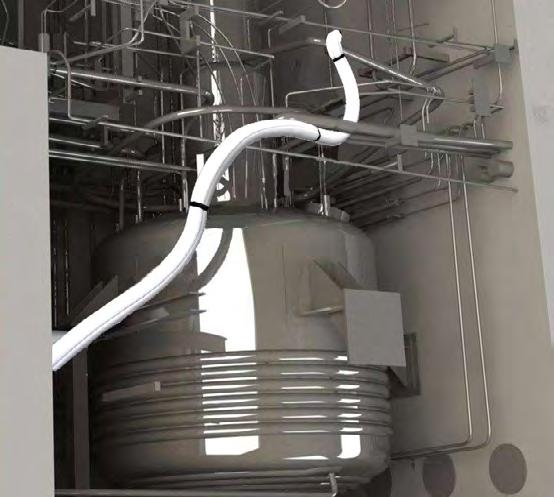
Aircube’s haptic arm
Development of FutureOn’s existing FieldTwin application into an integrated digital platform for de-risking and accelerating net zero energy projects in the UKCS, such as CCS thus evolving the digital platform from a success story in O&G, to a unique platform for integrated energy for the energy transition. Potential to reduce CO2 emissions through identification of operational efficiencies and improved performance.
Development of a multi-modal sensing and navigation system fusing forward-looking sonar data with a state-of-the-art visual Autonomous Underwater Inspection Payload (AUIP) and a Simultaneously Localisation And Mapping (SLAM) system, which integrates vision, IMU and DVL navigation, to generate all-weather 3D maps. These will provide real time 3D models of the subsea environment that can be used to plan inspection missions whilst maintaining safety. Potential to reduce CO2 emissions associated with subsea inspection activities by 132 kt CO2e per year.
132 kt CO2e
potential emissions reduction per year
The aim of this project is to automate wind turbine condition monitoring and predictive maintenance throughout the turbine’s lifecycle using an integrated technology suite. The system includes zero-power sensors, a wireless sensor network, and hybrid AI analytics for easy installation and scalability. Potential to reduce CO2 emissions associated with floating windfarm operations and maintenance by 176 kt CO2e per year.
potential emissions reduction per year

Quasset’s robot

Building the level of reliability and repeatability required for Normally Unattended Facilities (NUFs) with a focus on Accelerated Life Testing and a ‘no touch’ approach, Quasset is delivering insightful results to make robotics ‘business-as-usual’ and support facilities of the future. Quasset’s robotic field worker has the potential to reduce CO2 emissions by 17 kt per year.
The Robotics and Autonomous Systems (RAS) could potentially remove the requirement for crews by providing the inspection and maintenance, reducing the frequency of maintenance and inspection flights.
Reduce CO2 emissions by 17kt CO2e per year and frequency of maintenance and inspection flights.
SUPCON will develop, pilot, and deploy an intelligent and AI-Driven autonomous ground robot and drone for Greenhouse Gas (GHG) survey and asset inspection. It will include an integrated payload, management platform, and AI-engine for the mobile robot to perform autonomous GHG gas emissions detection, localisation, quantification, and 3D visualisation on a digital twin. Potential to reduce CO2 emissions associated with oil and gas terminals by 45 kt CO2e per year through the enhancement of inspection efficiency and early detection of leaks.
Reduce CO2 emissions by 45kt CO2e per year and frequency of maintenance and inspection flights.

SUPCON’s AI-Driven autonomous ground robot

Creation of a virtual collaboration tool to facilitate communication and observed conditions, empowering teams to collectively assess and address issues without physical presence. This will improve efficiency and reduce response times while reducing a site’s indirect carbon footprint. It will enable both on-site and remote personnel to monitor equipment, facilities, and processes in near real-time. Has the potential to reduce CO2 emissions through identification of operational efficiencies and performance optimisation by 137 kt CO2e per year.
Potential emissions reduction savings per year
Providing a scalable, end to end industry solution for the deployment, operation, maintenance and fleet management of robotic field worker solutions, specifically in the context of remote data collection, general inspection and operator rounds. This project seeks to prove that robots can become ‘field workers’ in an offshore environment, through creating a robust and reliable logistics, maintenance, fleet management support framework. The proposed solution is designed to be modular whereby each component is replaceable/ interchangeable. The robotic field worker has the potential to reduce CO2 emissions by 45 kt CO2e.
Potential to reduce cO2 emissions by 45 kt CO2e
This will play an important part in securing the future prosperity of our energy sector and achieving our net zero goals.
Malcolm Offord, Minister for Scotland, UK Government
I welcome this progress supporting cutting-edge technology which will help Scotland reach net zero by 2045. These innovative projects can help us create an economy which is fair, green, and growing.
Neil Gray, Economy Secretary, Scottish Government Wellbeing
Through the strategic application of realtime data analytics, robotics, and artificial intelligence, the energy sector is poised to unlock transformative insights, enabling informed decision-making, emission reductions, and improved safety. These technological leaps are instrumental in propelling us towards a net zero future and facilitating a seamless energy transition.
Graeme Booth, Head of Digital Technology, NZTC

Digital
The Offshore Energy Digital Strategy Group was established by NZTC, Offshore Energies UK (OEUK) and the North Sea Transition Authority (NSTA) to foster a modern, digitalised and integrated offshore energy sector. Participants included The Crown Estate, Crown Estate Scotland, the Technology Leadership Board, and Renewable UK with the Energy Systems and Offshore Renewable Energy Catapults managing the Taskforce.
The Digital Strategy Group was formed comprising three workstreams – 1) Digital Skills, 2) Digital/Data Principles and 3) Common Data Toolkit. All three workstreams have engaged with a wide range of industry and academia and are seeking to drive change and improve levels of digital awareness in industry. Most noticeably, in September 2023, a well-attended OEUK-led digital conference was held in Aberdeen to showcase the workstream challenges as well as highlighting examples of best practice across the sector.
A European Space Agency (ESA) initiative, the Task Force for Innovation in Energy Through Space (Energy Task Force) was launched in October 2022 with the main purpose of leveraging the use of space applications to advance sustainable innovative services addressing the clean green energy ecosystem and supporting the growth of a sustainable green economy. The Task Force today comprises eight international members: the European Distribution System Operators for Smart Grids (E.DSO), European Network of Transmission System Operators for Electricity (ENTSO-E), Electric Power Research Institute (EPRI), Global Alliance for Sustainable Energy, India Energy Storage Alliance (IESA), DECOM North Sea, Aberdeen Renewable Energy Group (AREG), and NZTC.
Discover more about the project Click here
Together, we overcome challenges and reach climate goals by sharing resources and expertise. Collaboration across sectors and borders sparks innovation and empowerment, vital in our fight against climate change.
NZTC was recognised for collaboration excellence for four projects:

NZTC was shortlisted in The Engineer’s 2023 Collaborate To Innovate (CTI) Awards, which recognises projects that address some of the biggest engineering challenges the industry faces at present.
The LHyTS project investigated the feasibility of a pilot trial for transporting low carbon hydrogen from Scotland to Rotterdam. The project analyses critical infrastructure and technology requirements; the logistics of loading, transporting, and storing Toluene (TOL) and Methylcyclohexane (MCH); and readying the hydrogen for end users. Scotland has the potential to become a net exporter of hydrogen by 2045, and this project paves the way in making transporting hydrogen at scale a reality.
Project partners:











The Renewables for Subsea Power project connects Mocean Energy’s Blue X wave energy converter with Verlume’s Halo underwater battery storage system. In February 2024, the project completed a 12-month test programme at sea to demonstrate how green technologies can be combined to provide reliable and continuous low carbon power and communications to subsea equipment. This technology offers a cost-effective future alternative to umbilical cables, which are carbon intensive with long lead times to procure and install.
Project partners:





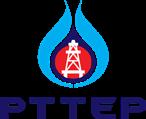

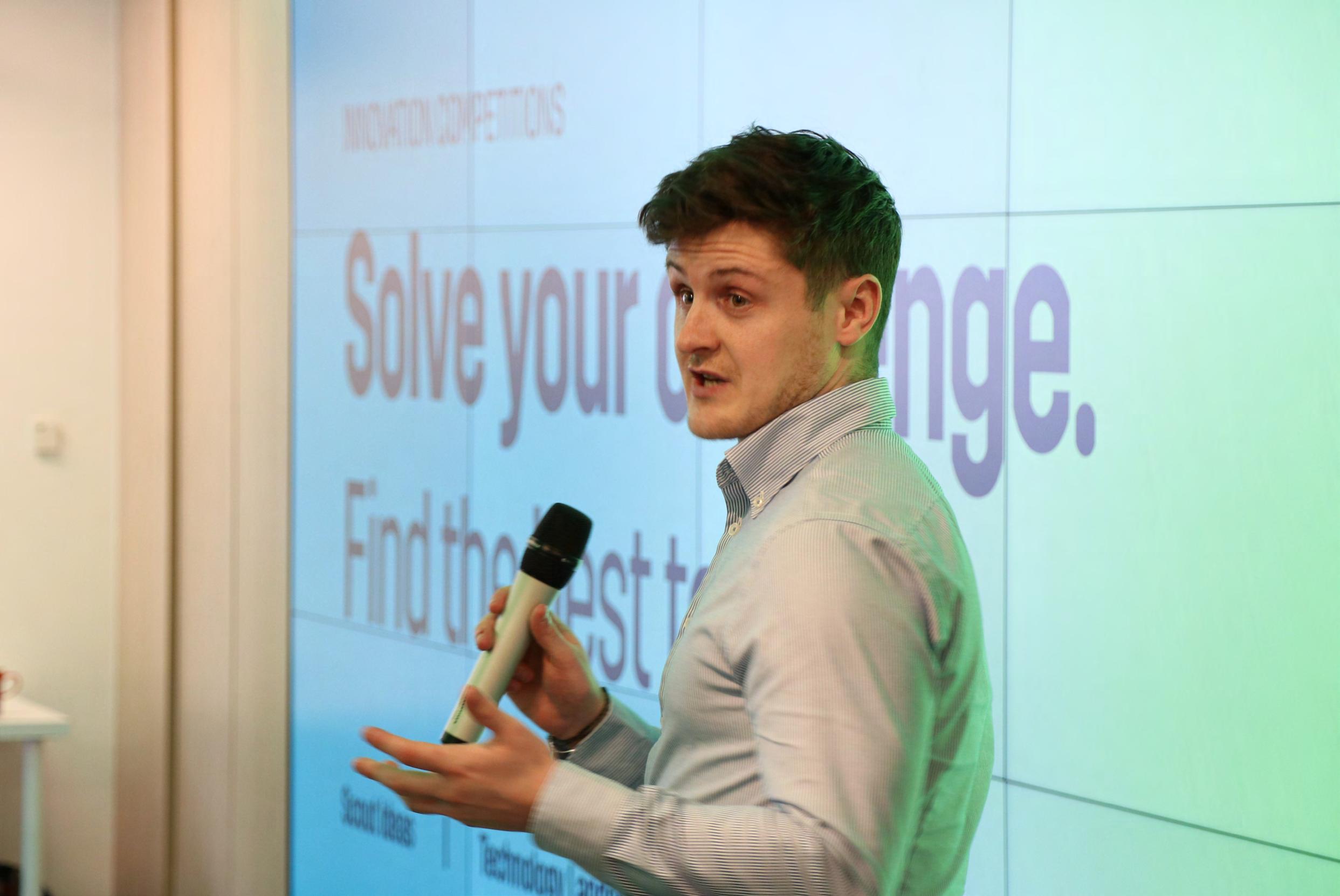


Under the category of, Collaboration, NZTC was shortlisted for the Hydrogen Backbone Link (HBL) project, which saw collaborative partners come together to explore and validate the concept of an allnew hydrogen pipeline from Scotland to Europe, using Germany as a case study, giving recognition to the UK in supporting European growth.

NZTC was shortlisted for the ‘Best Example of Collaboration’ award for our Wells Decommissioning Collaboration, at the OWI Global Awards 2023.
We continue to champion startups with the potential to accelerate the transition to net zero. Their agility, tenacity and disruptive thinking foster a culture of innovation, helping us to push boundaries and redefine the possibilities for clean and affordable energy.
Now in its sixth year, TechX continues to attract the talent and technological ingenuity that will be pivotal to unlocking new solutions required for the energy transition. The programme transforms inspiring potential into groundbreaking reality, through grant funding, dedicated mentorship and unrivalled access to industry and investors.
Our latest cohort launched in February 2024 attracting over 220 applications and spanning 45 countries. These 12 trailblazing startups are advancing new solutions across:
Low-carbon hydrogen
Alternative fuels
Carbon capture and storage
Renewable power
Digitalisation
Decarbonised
industrial heat
The programme maintains steadfast support from TechX’s global strategic partners, ADNOC, bp, ConocoPhillips and Equinor, with ConocoPhillips joining in February 2024, broadening the opportunities for our startups to thrive and flourish. Our strategic partners are complemented by support from professional services partner, Accenture.






TechX continues to welcome startups with promising solutions, that can propel the adoption of clean and affordable energy. These are the companies of the future, poised to reshape the energy landscape and help lead us towards net zero.
Mark Anderson, Chief Acceleration Officer & TechX Director


Robust drones with hover capability designed for reliable, robust and safer offshore infrastructure inspection

Power management control system to increase hydrogen production for dedicated solar-to-hydrogen, and lowering cost

Carbon-zero industrial process heating using low cost, integrated heat pump technology

Leveraging construction waste for secure carbon capture and storage in a novel carbon-negative composite

Technology to convert renewable energy, carbon dioxide and water into zero carbon jet fuel

Fuel-flexible power generator targeted at ports offering full control over the combustion process to operate at high efficiency with zero carbon emissions

High-temperature heat pump with embedded thermal storage for industrial heat decarbonisation, with heat and steam as a service potential

Novel solar thermal technology for buildings that harvests carbon neutral heat all year round

Platform-agnostic software and associated hardware for autonomous underwater inspections

Novel system design that combines advantages of fuel cells and diesel generators for sustainable off-grid and backup power solutions

Smart, battery-equipped containers for cost-effective electrification of shipping vessels

Lower cost green hydrogen production technology using a recirculating catalyst, with intrinsic hydrogen storage capability

From vision to venture, alumni continue to scale at pace
We now have 53 alumni who continue to scale, both technologically and commercially, securing further funding and investment, with an accelerated path to market entry.
£106M 175 in equity raised employees

The TechX Pioneers have raised over £106M in equity since graduating the programme and are currently raising another £61M TechX alumni provided work for at least 175 employees and contractors in 2023
From startup to scale up: The growth of past cohorts

Parallel Carbon’s unique direct air capture process utilises water, wind, sunshine, and abundantly available minerals to permanently capture CO2 from the atmosphere. The company’s solution is both affordable and scalable with the potential to remove millions of tonnes of CO2 from the atmosphere and also to produce green hydrogen, which is fundamental to decarbonising industries.
Since graduating from the programme, Parallel Carbon has raised a further $3.6M in a Seed Round led by Aramco Ventures, while CTO and Founder Aránzazu Carmona Orbezo won a $15,000 grant through the Greentech Europe programme for female-led startups. Having entered TechX as a team of two, the company has grown, recruiting three new employees since graduating: an electrochemist, industrial chemist, and operations specialist.
With additional expertise, the company continues to advance its solution, which is set to progress to Technology Readiness Level 5 in 2024.

Carbonation (Passive)
Processing (pH-swing)
for Storage
Electrolysis (Membraneless)
TechX has been a catalyst for our success. We got to challenge the assumptions we had about our business model and learnt how to take our technology from a home-made lab test to a real scaled up process.




ACUA Ocean continues to develop its hydrogenpowered uncrewed surface vessel (USV) for ocean monitoring and protection. The company’s longendurance USV is designed to operate in open ocean sea states of over three metres, increasing safety and operational capabilities whilst reducing the need for large, costly diesel-powered crewed vessels. ACUA Ocean’s innovation has the potential to directly reduce emissions by 100,000 tonnes of CO2e by 2030 across all market segments.
The company is currently leading a consortium, in partnership with Unitrove, that won a £3.8M UK government grant to build and showcase its innovative autonomous vessel and bunkering infrastructure technologies for liquid hydrogen. The “Hydrogen Innovation – Future Infrastructure & Vessel Evaluation and Demonstration (HI-FIVED)” consortium, which consists of key players in the UK maritime industry, expects to deliver the £5.4M project in Autumn 2024. HI-FIVED aims to establish a domestic green shipping corridor between Aberdeen and the Orkney and Shetland Islands, with hydrogen-powered autonomous ships being used to transport cargo.

Myriad Wind is developing the next generation of wind turbines with a high-performance modular multirotor design. Using a standardised 250 kilowatt (kW) generating unit with 13 metre long blades, Myriad can build any size of wind turbine with the same supply chain.
In the months following the TechX programme, Myriad hired three additional members of staff, including two research and development engineers, enhancing their collective expertise. The company was also awarded a SMART:SCOTLAND grant from Scottish Enterprise.
Myriad now continues to develop its 2kW proof of concept, which the company is set to test in 2024.


TechX alumni will benefit from the recently announced Energy Incubation and Scale-up Hub (EISH), which will form a key part of Aberdeen’s Energy Transition Zone, and is due to open in 2025. The hub will provide industrial unit and co-working space with support from partners BP, National Manufacturing Institute Scotland, NZTC and Scottish Enterprise.
As a delivery partner, NZTC will offer support to the startup tenants of the hub, which will foster an environment for engagement and collaboration with peers, SMEs, universities, and investors to collectively accelerate the transition to net zero.

This additional growth offering solidifies NZTC’s commitment to supporting entrepreneurs and in building a thriving clean energy ecosystem in the North East of Scotland and beyond.


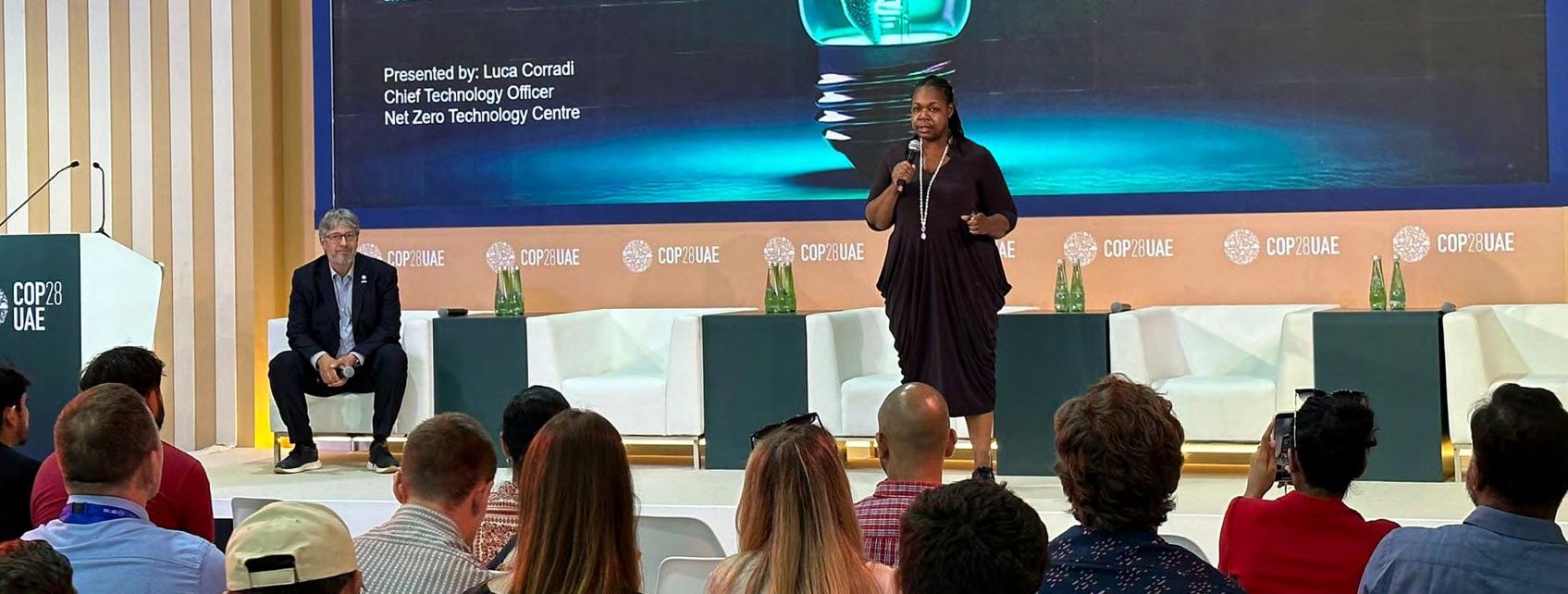
Global Partnership for Rapid Transfer, Deployment and Scale Up.
In December 2023, along with six international partners, the Technology Without Borders initiative was launched, bridging the net zero energy transition gap between nations in the Global North and South.
Announced during COP28, this initiative embodies a ‘just and inclusive’ ethos to tackle emissions reduction and will facilitate technology transfer, local adaptation and deployment, support knowledge and capacity building of local technical expertise, while strengthening supply chains.
Objectives:
Technology transfer, adaptation, diffusion, scale up and continuing innovation by local supply chains.
Build critical mass of local expertise and strengthen local supply chain businesses.
Facilitate the unlocking of international investment, and its matching with local industry contribution.
Promote economic development opportunities through the energy transition.
Six international Research and Technology Organisations are collaborating in the initiative:






COP28 must listen to the voices of the Global South and those affected most by climate change. That is why we welcome the launch of the Technology Without Borders initiative, which follows the Scottish Government’s £90 million Aberdeen City Region Deal investment in the Centre.
Their work is vital to helping address the injustice at the heart of climate change by supporting those communities which are suffering the most but have done the least to cause the climate emergency.
Màiri McAllan, Cabinet Secretary for Transport, Net Zero and Just Transition

Download the full whitepaper
Click here
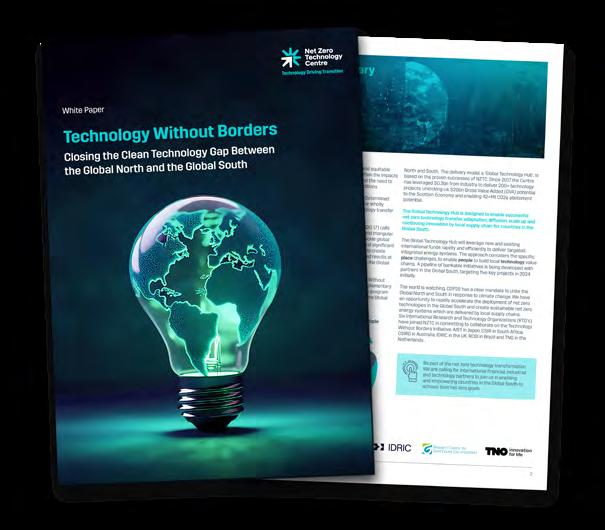
We must all do our part to ensure developing nations are not bearing the brunt of climate disruption.
Technology Without Borders is a fantastic initiative that will deliver innovative and affordable solutions through information sharing to help secure the future prosperity of the energy sector and achieve our much-needed net zero goals. I encourage all partners to consider joining the programme.
The UK Government is investing £90 million in the Net Zero Technology Centre to support sustainable economic growth in North East Scotland, as part of our more than £2.7 billion investment to level up across Scotland.
Malcolm Offord, Minister for Scotland, UK Government

The National Decommissioning Centre (NDC) is a partnership between NZTC, the University of Aberdeen and industry.
Combining industry expertise with academic excellence, the NDC is working in partnership with the energy sector to lead research and development (R&D) that supports the sector to achieve cost and emissions reductions, improve environmental outcomes and transform approaches to deliver sustainability and net zero in decommissioning.
It is exciting to know that the expertise and technology developed at the NDC can be implemented elsewhere in the world. We are seeing this through our partnership with Chevron which has been extended for another 3 years to continue work around marine ecology and biodiversity and start a project on the degradation of plastics on pipelines which are to be decommissioned.
Our partnership with the Nuclear Decommissioning Authority has also expanded over the last year with additional funding to support several projects including the development of an AI enabled risk live dashboard for monitoring real-time news to evaluate how global events can influence the industry. Another study is looking at the socioeconomic impact of decommissioning at a local and national level and the possible impacts and benefits for associated communities.
We are increasingly working across the wider energy ecosystem and we are engaging extensively with the renewables sector with our partner the Offshore Renewable Energy Catapult, undertaking several projects with the NDC’s marine simulator to de-risk new technologies.
Professor Richard Neilson, Director, NDC
9 Ongoing Projects
6 Current PhD Students

The National Subsea Centre (NSC) is a partnership between NZTC, Robert Gordon University (RGU), and industry.
The NSC aims to develop smart digital and engineering technologies to enable a faster, more cost-effective and sustainable transition to a net zero energy basin, locally in the North Sea and globally in energy environments.
In collaboration with RGU, the University of Strathclyde (UoS) and NZTC, the NSC has established the Centre for Doctoral Training (CDT) in Net Zero Technologies, designed for those who wish to undertake research to aid in the global transition to net zero whilst continuing a career in industry.
The CDT will teach and mentor a cohort of students, allowing them the opportunity to spend approximately 75% of their time developing invaluable skills working directly with a company and the remaining time carrying out PhD-level research projects with taught modules.
RGU was awarded £1.2M of funding by the Scottish Government to establish a hydrogen testing facility at the NSC. First Minister Humza Yousaf publicly announced funding for this project at the All-Energy Conference in May 2023 in Glasgow.
The funding comes as part of the Hydrogen Innovation Scheme, a £7M capital funding stream of the Emerging Energy Technologies Fund (EETF), designed to support the development of renewable hydrogen technologies needed to achieve the Scottish Government’s ambition of 5GW installed hydrogen production capacity by 2030.
The testing facility, Hy-One, is a comprehensive one-stop hydrogen storage testing facility providing plugand-play testing and demonstrations for hydrogen storage systems and prototypes. The facility will support the development, demonstration and implementation of small-to-large-scale compressed hydrogen storage vessels and their accessories.
In October 2022, we launched our suite of Net Zero Technology Services, providing companies with unparalleled insight and foresight on current and emerging technologies to help them decarbonise their business and make the right technology investment decisions.
Following the launch of the Technology Roadmapping and Technology Due Diligence services in 2022, we launched our Horizon Scanning service in February 2023.
Horizon Scanning delivers regular, unique bespoke insights to organisations on emerging technologies, industry trends, global projects, and policy. Our expert-led Horizon Scanning service helps future-proof businesses and provide better understanding of the developing technology landscape, to support diversification strategies and planning.


Technology developments and breakthroughs
Investments and projects across the energy sector
Legislation, policy and government developments
ADNOC
Decarbonisation
Challenge

A competition delivered by NZTC
650 global applicants
10 finalists
1 winner
ADNOC launched a global competition to find innovations that will reshape the global energy landscape. The competition was delivered in partnership with NZTC and supported by AWS, bp and Hub71.
The competition was launched at UAE Climate Tech Forum in Abu Dhabi, where over 1,000 global policy makers, innovators, and industrial leaders met to drive technological solutions for decarbonisation.
The ADNOC Decarbonisation Technology Challenge drew 650 applicants from across 50 countries. Applicants specialised in innovations including digital applications, carbon capture utilisation and storage (CCUS), new energies, oil and gas emissions reduction and advanced materials for decarbonisation, and nature-based solutions.
ADNOC awarded a million-dollar piloting opportunity to Revterra, a Houstonbased producer of novel batteries made from recycled steel.
1,000
Over 1,000 global policy makers, innovators, and industrial leaders met to drive technological solutions for decarbonisation.
Revterra was selected from among 10 finalists at an event in Dubai. As well as receiving up to $1 million in piloting opportunities, they will gain access to state-of-the-art research and innovation facilities in Abu Dhabi.
Case study

Technology Due Diligence Guides SCF
Partners’ Investment in Global E&C
Service
Technology Due Diligence
Client
SCF Partners
NZTC provided a focused due diligence exercise for private equity firm SCF Partners who were seeking to expand their portfolio with a focus on maintenance and upgrade of critical energy infrastructure.
SCF identified an opportunity to invest in Global E&C, a UK brownfield EPC contractor with digital capability and solutions that could play a pivotal role in delivering energy security, digitalisation, and decarbonisation of existing energy infrastructure.
NZTC assisted with a technical and commercial review of Global E&C’s digital ecosystem and provided unique insights on technology, market fit and potential routes to market.
Detailed analysis of the digital platforms coupled with NZTC’s unique insights on technology, market fit and potential routes to market. This strengthened SCF Partners conviction that Global E&C’s digital solutions were differentiated. It also signposted near term actions to follow up on.
NZTC brought real commercial insight to help us understand market positioning and the competitive landscape. Pleasingly, the team delivered exactly against the brief and against a tight timetable.
Adam Kerr, Vice President, SCF Partners

Technology Roadmapping
Identifies 74%
Emissions Reduction
Potential Across Greater Markham Area (GMA) Hub
Service Technology Roadmapping
Client Spirit Energy
74%
reduction in power generation emissions
Spirit Energy have a portfolio consisting predominantly of gas (96%) and provide energy essential to the region. As part of their decarbonisation strategy, they identified the need to reduce power and venting emissions from assets across their Greater Markham Area, which spans the UK and Dutch continental shelves. NZTC services were engaged, applying our Technology Roadmapping tool to identified short-term decarbonisation practices and technology solutions that could realise significant emissions reduction.
Project scope
To determine which innovative technologies could be adopted and deployed across GMA to reduce future emissions relating to power and venting, we applied our Technology Roadmapping tool to evaluate the technology solutions with best fit and impact (Flaring and Fugitive emissions were not part of this scope).
Results
Short term decarbonisation practices were identified, supporting emissions reductions exceeding NSTD targets on GMA, in addition to technology innovations.
We identified that a switch to green methanol as a retrofittable alternative fuel for gas turbines alone would provide a 74% reduction in power generation emissions, GMA location is in good proximity to European suppliers.

NZTC is committed to contributing to the UN Sustainable Development Goals (SDGs). We do this through our own operations, and through our Technology Services advisory offering for our clients.
The contribution through our own operations impacts eight SDGs and the contribution through our advisory services impacts four SDGs. Our greatest external area of impact is on SDG 7 Affordable & Clean Energy and SDG 13 Climate Action.
NZTC’s carbon footprint decreased during FY 19/20 to FY 21/22, largely because of COVID-19, and then has increased since. We started our Technology Services advisory offering in 2022, which resulted in a significant rise in business travel, particularly international air travel. Staff numbers also rose markedly between FY 19/20 and FY 22/23.

Our current focus areas are:
• Promoting efficient energy use across all organisational activities.
• Preventing pollution and reducing consumption of resources through waste management strategies that promote waste minimisation and recycling.
• Promoting the adoption of more sustainable, reduced emission options to commute and travel for work.
• Measuring and analysing the carbon footprint of our organisation’s activities in conjunction with other climate change mitigation efforts.

We have a passion for sparking innovation in the minds of the next generation. Through collaborations with our industry partners, regional organisations, schools, and universities, we actively promote STEM subjects to young people while showcasing the exciting and dynamic opportunities available in the energy industry.
20 Interns 4 Career Ready Students 122 Early Career Support Attendees at Events 3 Events Hosted 4 Graduates 2 Careers Fairs Attended 1 Graduate Apprentice

Empowering the next generation of innovators is not just a commitment; it’s a catalyst for transformation. NZTC is dedicated to fostering brilliance in the energy industry, nurturing talent for the future workforce which will help lead us to net zero.
Kirsty Robertson, Head of HR, NZTC
My time at NZTC was incredibly insightful and rewarding. Working with industry professionals at the top of their game, I was mentored closely and learned a great deal while contributing towards NZTC’s mission. This experience wasn’t just about personal growth; it was about becoming part of a community striving for excellence together.
Nathaniel Gate, Intern
During my internship with Technology Services, I had the chance to learn about a number of innovative solutions aimed at decarbonising operations. Additionally, I gained knowledge on how to apply my engineering skills in a more business-oriented manner to cater to the needs of clients.
Youssef Salem, Intern
It was a fantastic experience for the P6s and P7s. We really appreciate the amount of time invested in the class. They thoroughly enjoyed the day and came back buzzing about it. A parent caught me yesterday to share that their daughter had said it was the best school trip she had ever been on!
We hope it will inspire them all to consider STEM careers and think about their own role in tackling net zero - but also as motivation for them all to see a modern workspace and understand the different roles there.
Gillian Payne, Teacher, Cluny Primary School

Chaired by Peter Mather, our Board is responsible for the overall strategic direction and long-term success of NZTC. It is responsible for making sure we have the resources, controls, and governance we need to deliver our goals. Our Board meets regularly to review our strategies and policies and receives reports from our leadership team. It delegates to our Chief Executive Officer, who in turn delegates responsibility for specific activities to members of the leadership team.
Chaired by Peter Mather, our Nomination Committee reviews the structure, size, and composition of the Net Zero Technology Centre Board to ensure the Board is appropriately represented in terms of skills, knowledge, experience, and diversity. The Nomination Committee also works with the executive leadership team to ensure a robust succession plan for the executive is in place. The Nomination Committee will also ensure appropriate representation on other Board related committees and Panels.
Chaired by Jeff Corray, our audit committee advises the Board on the effectiveness of our management procedures. It receives reports on risk, control and governance of the centre, offers advice to the Board, and monitors the resulting actions.
We regularly report our performance against a range of key indicators to the Aberdeen City Region Deal joint committee, which comprises senior representatives from the Aberdeen City and Aberdeenshire Councils and Opportunity North East (ONE).
The Net Zero Technology Centre was created in 2017 as part of the Aberdeen City Region Deal, with £180 million of UK and Scottish government funding.


